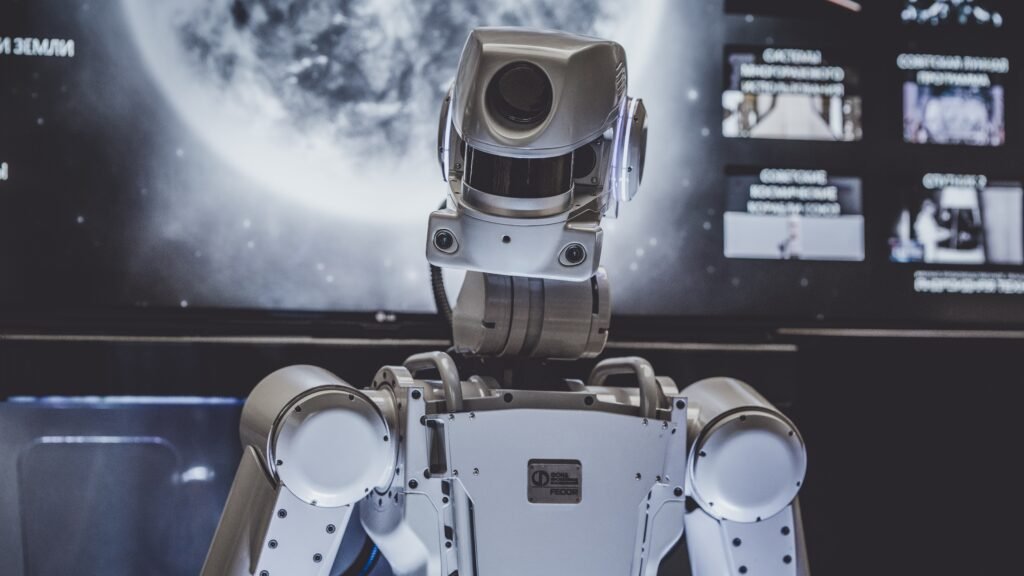Are you curious about the common applications of deep learning in artificial intelligence? Look no further! This article will provide you with a concise overview of the various ways in which deep learning is utilized in the field of AI. From self-driving cars to natural language processing, deep learning is powering numerous groundbreaking advancements. Get ready to explore the exciting world of AI and discover how deep learning is revolutionizing technology as we know it.

Computer Vision
Computer vision is a branch of artificial intelligence that focuses on enabling computers to understand and interpret visual data, just like humans do. It involves the development of algorithms and models that can analyze and extract information from images and videos. There are several key applications of computer vision that are widely used in various fields.
Image recognition
Image recognition is one of the fundamental tasks in computer vision. It involves training computer systems to identify and classify objects or patterns within digital images. This technology finds its applications in various domains, such as self-driving cars, security surveillance, and healthcare. For example, image recognition can be used to automatically categorize and identify different types of objects in real-time, allowing autonomous vehicles to detect and respond to potential hazards on the road.
Object detection
Object detection goes a step further than image recognition by not only identifying objects within an image but also locating and outlining them. This technology is essential for tasks such as video surveillance, tracking objects in real-time, and robotics. Object detection algorithms can quickly identify and track objects of interest, enabling autonomous vehicles to navigate safely and accurately, and helping security systems detect and track suspicious activities.
Video analysis
Video analysis involves extracting relevant information from videos, such as object tracking, activity recognition, and event detection. This technology is crucial in surveillance systems, video content analysis, and behavior monitoring. For example, video analysis algorithms can be used to automatically detect and track people’s movements in crowded areas, helping to identify potential security threats or suspicious behavior.
Natural Language Processing
Natural Language Processing (NLP) focuses on enabling computers to understand and process human language. NLP is used in various applications, from language translation to speech recognition and text generation.
Language translation
Language translation aims to translate text or speech from one language to another. Deep learning algorithms can analyze the context and meaning of sentences to provide accurate and fluent translations. Language translation technology is used in various domains like online content localization, cross-cultural communication, and global business operations.
Speech recognition
Speech recognition technology aims to convert spoken words into written text. Deep learning models, such as recurrent neural networks (RNNs) and convolutional neural networks (CNNs), are used to analyze audio data and transcribe it into text. Speech recognition has applications in areas like virtual assistants, transcription services, and voice-controlled devices.
Text generation
Text generation involves the creation of human-like text based on given input or prompts. Deep learning models, such as generative adversarial networks (GANs) and recurrent neural networks (RNNs), can generate coherent and contextually relevant text. Text generation finds applications in chatbots, content creation, and creative writing assistance.
Recommendation Systems
Recommendation systems are designed to provide personalized recommendations to users based on their preferences and behaviors. Deep learning techniques have significantly improved the accuracy and effectiveness of recommendation systems.
Product recommendations
Product recommendation systems analyze user behavior, past purchases, and similar preferences to suggest relevant products to customers. Deep learning models can identify patterns and similarities within vast amounts of data, enabling accurate and personalized recommendations. Recommendation systems are widely used in e-commerce platforms, allowing customers to easily discover products that align with their interests.
Movie and music recommendations
Movie and music recommendation systems analyze users’ viewing or listening history, as well as their preferences, to suggest relevant movies, TV shows, or songs. Deep learning models can process large datasets and extract meaningful patterns, improving the accuracy of recommendations. Popular streaming platforms use recommendation systems to provide personalized content suggestions to their users, enhancing their overall experience.
Content personalization
Content personalization uses deep learning algorithms to tailor content, such as articles, news, or advertisements, to individual users’ interests and preferences. By analyzing user behavior, demographics, and past interactions, content personalization systems can deliver more relevant and engaging content to each user. This technology is widely used by online platforms and news outlets to optimize user engagement and satisfaction.
Anomaly Detection
Anomaly detection involves identifying patterns or data points that deviate significantly from the norm. Deep learning techniques have proven to be highly effective in detecting anomalies in various domains.
Fraud detection
Fraud detection systems use deep learning algorithms to identify fraudulent or suspicious activities within massive datasets. By analyzing patterns, user behavior, and historical data, deep learning models can detect anomalies indicative of fraudulent behavior. Fraud detection is important in sectors such as banking, insurance, and e-commerce, where identifying and preventing fraudulent activities is crucial.
Cybersecurity
Deep learning is applied to cybersecurity to detect and prevent cyber threats, such as malware, ransomware, and phishing attacks. Deep learning models can analyze network traffic, identify suspicious patterns, and distinguish between normal and malicious activities. By leveraging deep learning, cybersecurity systems can adapt and evolve to combat emerging threats effectively.
Network traffic analysis
Network traffic analysis involves monitoring and analyzing data packets within a network to identify anomalies, intrusions, or suspicious activities. Deep learning models can analyze large volumes of network traffic data, detect patterns, and identify potential security breaches. Network traffic analysis is essential for maintaining the security and integrity of computer networks, especially in large organizations or critical infrastructure systems.

Autonomous Vehicles
Autonomous vehicles, also known as self-driving cars, rely heavily on deep learning techniques to perceive and interpret their surroundings, enabling them to navigate safely and effectively.
Self-driving cars
Deep learning is at the core of self-driving car technology. Computer vision and sensor data analysis allow autonomous vehicles to recognize and interpret their environment, including objects, pedestrians, and road signs. Deep learning models enable the real-time analysis of this complex visual data, making autonomous vehicles capable of making informed decisions and navigating autonomously.
Collision avoidance
Collision avoidance systems use deep learning to detect and predict potential collisions with other vehicles, pedestrians, or obstacles. By analyzing sensor data from cameras, radar, and lidar, deep learning models can accurately identify and track potential hazards, allowing autonomous vehicles to take necessary actions to avoid accidents.
Lane detection
Lane detection is a critical component of autonomous vehicles’ perception systems. Deep learning algorithms can analyze camera inputs and identify lane markings, allowing autonomous vehicles to maintain their position within the correct lane. Lane detection is essential for ensuring the safety and accurate navigation of self-driving cars.
Virtual Assistants
Virtual assistants, such as voice-controlled devices, smart home automation systems, and chatbots, leverage deep learning techniques to understand and respond to human commands or queries.
Voice-controlled devices
Voice-controlled devices, such as smart speakers, use deep learning models to process and interpret spoken commands. These devices analyze the acoustic features of speech, extract meaning, and execute the requested actions. Voice-controlled devices are increasingly integrated into households, providing convenience and seamless control of various smart devices.
Smart home automation
Smart home automation systems use deep learning algorithms to understand residents’ preferences, learn their habits, and automate various tasks accordingly. By analyzing data from sensors, devices, and user interactions, smart home systems can optimize energy management, enhance security, and provide personalized experiences. Deep learning enables smart home automation systems to adapt and improve over time, providing greater convenience and efficiency.
Chatbots
Chatbots employ deep learning models to understand and respond to user queries or conversations. By analyzing text inputs, chatbots can generate appropriate responses, provide information, or execute tasks. Deep learning allows chatbots to understand context, sentiment, and intent, improving the overall conversational experience. Chatbots are widely used in customer support, virtual assistants, and online service interactions.

Healthcare
The healthcare industry benefits from deep learning applications in various aspects, ranging from medical image analysis to personalized medicine and disease diagnosis.
Medical image analysis
Deep learning plays a crucial role in medical image analysis, enabling accurate and efficient interpretation of medical images such as X-rays, CT scans, and MRIs. Deep learning models can detect and classify abnormalities, assist in early disease detection, and provide automated and objective analysis. Medical image analysis enhances diagnostic accuracy and aids in treatment decision-making.
Personalized medicine
Personalized medicine combines patient-specific information with deep learning algorithms to provide tailored treatments and interventions. By analyzing genetic data, medical history, and treatment outcomes, deep learning models can predict disease risks, recommend personalized treatments, and optimize therapeutic approaches. Personalized medicine aims to improve patient outcomes by considering individual variability and genetic factors.
Disease diagnosis
Deep learning techniques are used in disease diagnosis to analyze patient data, symptoms, and medical records. Deep learning models can identify patterns and correlations within large datasets, leading to accurate and early diagnosis. Disease diagnosis systems assist healthcare professionals in making informed decisions, reducing diagnostic errors, and improving patient care.
Financial Forecasting
Deep learning has gained traction in financial forecasting due to its ability to analyze large amounts of financial data, identify patterns, and make accurate predictions.
Stock market prediction
Stock market prediction involves using deep learning models to forecast stock prices, trends, and market movements. By analyzing historical price data, financial indicators, and news sentiment, deep learning algorithms can predict future stock market trends and assist investors in making informed decisions. Stock market prediction algorithms aim to optimize trading strategies and maximize returns.
Credit risk assessment
Credit risk assessment involves evaluating the creditworthiness of individuals or businesses. Deep learning models analyze various factors, such as credit history, financial data, and alternative data sources, to assess the likelihood of default or creditworthiness. By identifying risk factors and patterns, deep learning algorithms can improve the accuracy of credit risk assessment models, aiding financial institutions in managing credit portfolios effectively.
Portfolio optimization
Deep learning models are used in portfolio optimization to maximize investment returns while minimizing risk. By analyzing historical market data, asset performance, and market trends, deep learning algorithms can identify optimal asset allocations and rebalancing strategies. Portfolio optimization techniques aim to optimize investment portfolios based on individual risk tolerance, financial goals, and market conditions.
Robotics
Deep learning plays a crucial role in robotics, enabling machines to perceive, interact, and manipulate objects in dynamic environments.
Object manipulation
Object manipulation involves the use of deep learning algorithms to enable robots to interact and manipulate objects accurately. Deep learning models can analyze sensor data and visual inputs, allowing robots to grasp, lift, and handle objects with precision. Object manipulation is essential for tasks such as industrial automation, logistics, and manufacturing.
Gesture recognition
Gesture recognition allows robots to understand and interpret human gestures and movements. Deep learning algorithms can analyze visual input, such as camera or depth sensor data, and recognize various gestures, providing more intuitive ways for humans to interact with robots. Gesture recognition technology finds applications in human-robot collaboration, assistive robotics, and virtual reality systems.
Humanoid robots
Humanoid robots aim to mimic human behavior and appearance. Deep learning techniques are used to develop humanoid robots that can recognize and understand human speech, gestures, and emotions. By leveraging deep learning algorithms, humanoid robots can interact with humans in more natural and meaningful ways, enabling applications in areas such as social assistance, education, and entertainment.
Gaming
Deep learning has made significant advancements in the gaming industry, enhancing game intelligence, graphics, and overall player experiences.
Enemy behavior simulation
Deep learning algorithms are used to simulate intelligent enemy behavior in video games. By training deep learning models on gameplay data and human strategies, game developers can create challenging and adaptive non-player characters (NPCs) that provide realistic and engaging gameplay experiences. Enemy behavior simulation adds depth and realism to game environments, enhancing player immersion.
Intelligent game agents
Deep learning models can be used to develop intelligent game agents that adapt and learn from player behavior. These agents can analyze player strategies, predict actions, and adjust their gameplay to provide appropriate challenges. Intelligent game agents enhance player engagement by providing personalized and dynamic experiences, making games more immersive and enjoyable.
Realistic graphics
Deep learning algorithms are employed in computer graphics to generate realistic and detailed visuals. Techniques such as generative adversarial networks (GANs) can create high-resolution textures, realistic lighting effects, and lifelike animations. Realistic graphics enhance the visual quality of games, immersing players in stunning virtual worlds and enhancing overall gaming experiences.
In conclusion, deep learning has revolutionized various domains of artificial intelligence, enabling advancements in computer vision, natural language processing, recommendation systems, anomaly detection, autonomous vehicles, virtual assistants, healthcare, financial forecasting, robotics, and gaming. By leveraging deep learning algorithms and models, industries and organizations can achieve higher accuracy, efficiency, and personalization in their applications and services. The future of artificial intelligence is closely intertwined with deep learning, opening up exciting possibilities for innovation and improvement across a wide range of sectors.






